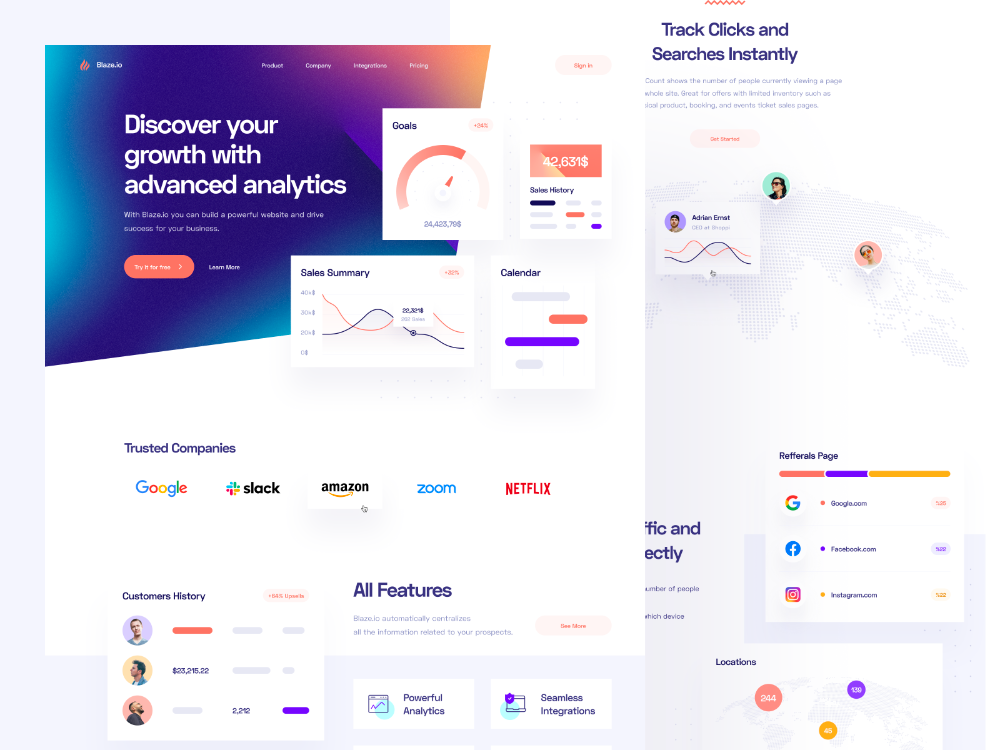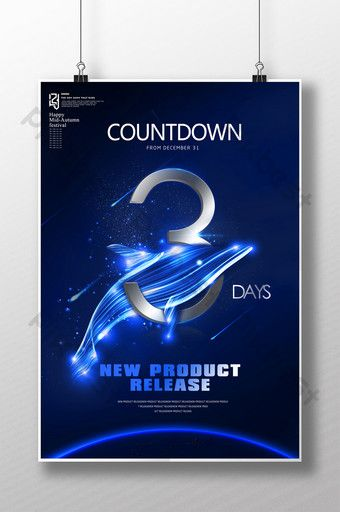"Pre-launch is the time when you gather the most valuable feedback, and it's also the time when you can make the most impact on the eventual success of your product."
After over a decade of launching software products, I've learned firsthand just how critical those pre-launch months are. Getting people excited about your new SaaS before it goes live can literally make or break its success.
Trust me, I've been there. When I launched my first product back in 2012(a project management tool for Sales guys), I didn't do nearly enough groundwork ahead of time. I just focused on the product development and assumed “if you build it they will come.” Boy was I wrong! We sputtered straight out of the gates because no one knew who we were.
I eventually turned things around, but I learned the hard way how crucial pre-launch marketing really is. Now at my agency, it’s the key ingredient all of our successful SaaS clients have in common. Their launches ignite because we’ve laid the groundwork to drive buzz and demand right out of the gate.
So if you’re gearing up to unveil a new software solution, this pre-launch guide is for you. It’s everything I wish I knew back then, battle-tested from many more product launches we’ve engineered. I’ll cover step-by-step...



6 Months Out: Start Building Your Audience
The months leading up to your launch are crucial for laying the groundwork and establishing an audience. Don't wait until the last minute!
Create Social Media Accounts
Reserve your brand names on the major social platforms:
Fill out the profiles thoroughly and start posting relevant industry content to organically grow your followers.
Launch Your Website
Don't worry about a full-featured site yet. Start with a simple landing page that explains your product value proposition and allows visitors to subscribe for launch updates.
SaaS Free Trial Signup Page Copy Template
Headline: Try [Product] risk-free for 14 days!
Hook: See firsthand how our [key differentiator] can help you [achieve goal]
Benefits:
- Access all core product features
- Seamlessly import your data
- Cancel anytime, no credit card required
Form Fields:
- Password
- Company Name
Call-To-Action: Get Your Free 14-Day Trial
Start Blogging
Content marketing will be critical for organic reach. Start publishing posts introducing your brand, covering industry topics, and previewing product features.
Network with Influencers
Identify relevant bloggers, journalists, industry analysts and potential affiliates. Reach out to brief them on your upcoming launch and gauge their interest in covering or promoting you.


4 Months Out: Ramp Up Content Production
With your initial audience building blocks in place, it's time to crank content production into high gear.
Expand Your Blog Content
Aim for at least 2-3 blog posts per week. Cover tactical topics your buyer personas would find interesting and link back to your site.

Launch Your Email Newsletter
Regular email updates are a great way to engage subscribers leading up to launch. Offer sneak peeks of your product and team, user stories, launch updates, etc.
Pre-Launch Lead Nurture Email Drip
Week 1: Subject: The wait is almost over for [Product]!
Thanks again for signing up for early access. We can't wait for you to try [Product] soon! Let us know if you have any questions in the meantime.
Week 3: Subject: Only [X weeks/days] until [Product] launches!
We're putting the finishing touches on [Product] before our official launch on [date]. Enjoy this video preview of our new [feature]: [video link]
Looking forward to getting your feedback once you're in the product! Please reach out if I can help with anything in the meantime.
Week 5: Subject: Your early access to [Product] starts now!
Hi [Name],
We're so thrilled to get [Product] in your hands! Click here to log in and start your 14 day trial: [link]
We can't wait to hear what you think. Please reach out anytime with feedback or questions during your trial.
Enjoy!
Create Free Tools or Content
Develop a free tool, ebook, template, checklist or other "lead magnet" to capture emails in exchange for downloading it.
Record Video Content
Create short intro videos to bring your brand personality to life. Post them on your blog, social channels and YouTube.
Guest Post on Industry Blogs
Reaching out for contributor posts on popular niche sites expands your audience and provides SEO benefits.
Speak at Events
Getting on stage establishes you as an industry thought leader. Look for relevant meetups, conferences and webinars.
SaaS Pre-Launch Survey Email Template
Subject: Quick feedback to improve [Product] before launch!
Hi [Name],
I hope you're as excited as we are for the upcoming launch of [Product]! We're putting the finishing touches on it and want to make sure we're addressing the biggest pain points for customers like you.
Could you please take 2-3 minutes to fill out this quick survey? We want to gather final feedback so we can refine [Product] before release:
[Survey link]
Your answers will help us validate we're on the right track and building exactly what you need. As a thank you we'll send you a discount code good for 25% off at launch!
Thanks in advance for your help. Please don't hesitate to reach out if you have any other questions leading up to our big debut.
Cheers, [Your name]

2 Months Out: Focus on Sales and Affiliates
With launch nearing, shift focus to finalizing your sales and affiliate programs.
Build a Product Waitlist or Pre-Orders
Let excited users sign up on your site to get early access at launch. Consider offering discounts or other perks for pre-orders.
Early Access Landing Page Template
Headline: Be the first to try [Product]
Get exclusive early access by joining our waitlist. As one of the first users, you'll get:
- Discounted founders pricing
- Priority support and onboarding
- Input to shape future product development
[Email signup form]
We'll notify you as soon as your early access is ready!
Develop Pricing and Packages
Finalize pricing tiers and feature sets for each package. Communicate them clearly on your site.
Recruit Affiliate/Referral Partners
Find complementary companies to partner with. Offer commissions for referrals and affiliates that drive sign-ups.
Partnership Outreach Email Template
Subject: Potential partnership opportunity with [Your Company]
Hi [Name],
I wanted to reach out because I think there could be a great partnership opportunity between [Your Company] and [Their Company].
We are launching [Product], a new [describe product] on [launch date]. I believe it could be very valuable for your [customers/audience] who are looking to [benefit].
Some potential ways we could work together:
- Affiliate marketing - you promote [Product] and receive a commission on referrals
- Co-marketing around launch - joint webinar, content promotion, etc.
- Integration - our product integrates with yours to add value for customers
I'd love to set up a quick call to discuss if you're interested in exploring this further. Are you available on [dates]?
Looking forward to connecting.
Best, [Your name]
Hire Initial Sales Team Members
Take time to ramp up outbound salespeople who can hit the ground running at launch.

1 Month Out: Create Buzz
Here's where more overt launch promotion kicks into high gear.
Brief Influencers and Media
Give key press contacts an exclusive heads up about your launch. Have assets like review guides readily available.
Throw a Launch Party Event
Host an in-person event to generate buzz. Live demos and networking are great ways to showcase your brand.
Launch Social Media Ads
Run ads on platforms like Facebook and Twitter targeting your buyer personas. Link to your pre-order page or waitlist.
Send Cold Emails
Segment your outreach lists by industry. Craft targeted emails pitching your solution and upcoming launch.
Line Up Customers for Launch
Offer free accounts or discounts to select customers in exchange for testimonials and case studies.
SaaS Product Launch Press Release Template
CITY, Date - [Company] today announced the official launch of [Product], an innovative new [software/platform/etc] designed to help [target customers] [solve problem/achieve goal].
[Product] provides [key features and differentiators] that enable users to [highlight valuable outcomes]. During the product's six-month beta period, over [ # ] customers saw exceptional results, including [metrics or customer quotes].
"We developed [Product] to address the growing need for [relevant pain point] based on direct feedback from customers struggling with outdated solutions," said [Founder Name], [Founder Title] of [Company]. "The overwhelmingly positive response from early adopters confirms we've created something truly game-changing for the industry."
[Product] is now available with pricing starting at [price]. A free trial is offered so customers can experience benefits firsthand. Learn more and sign up at [website URL].

Launch Week: Make a Splash
It's finally launch week! Double down on promotion to make a big first impression.
Blast Press Releases
Distribute embargoed and launch day press releases to your media list. Highlight customer wins and product differentiators.
Post on Social Media
Bombard your followers with launch announcements across your social channels. Experiment with promoted posts.
Host a Webinar
Gather attendees for an onboarding and demo webinar. Record it for future lead gen use.
Drop Recap Video Content
Edit sizzle videos recapping launch events and highlighting customer traction for social media.
Run Retargeting Ads
Remind website visitors who didn't convert to come back and claim your offer.
With the right sequencing of content, outreach and promotion, your pre-launch marketing plan will drive growth as soon as you launch. Stay focused in the final months and execute each initiative at the right time. Do that, and you'll launch confidently with an audience eagerly awaiting your solution.
FAQ
1. How early should I start marketing and building an audience for my SaaS launch?
Ideally you want to start building awareness and buzz around your upcoming product 6-12 months before your planned launch date. This gives you time to organically build an audience, establish thought leadership, generate hype and collect a waitlist of interested users. Don't wait until the last minute!
2. What platforms should I focus on for pre-launch marketing?
Focus on a few key platforms rather than spreading yourself too thin:
- Blog: Publish 2-3X per week to establish expertise and SEO.
- Email lists: Collect emails via landing pages and convert them into a dedicated newsletter.
- Social media: Start growing your follower base on 2-3 relevant platforms like Twitter, LinkedIn, etc.
- Video: Record short teasers and tutorials to promote on YouTube and elsewhere.
3. What tactics work best for generating pre-launch leads?
Some of the most effective ways to capture leads include:
- Landing pages: Simple pages that explain your product value proposition and collect emails.
- Content offers: "Lead magnets" like free tools, ebooks, templates etc. given in exchange for an email.
- Paid ads: Targeted ads driving to landing pages to capture leads. Start small.
- Events: Speaking on webinars or at in-person events to engage with your audience.
4. How can I recruit early adopters and beta users?
- Tap into your existing network and social channels to find ideal early adopters.
- Offer discounts, swag or early access for signup.
- Participate in relevant communities and groups to connect with potential users.
- Attend industry events or conferences to network and pitch attendees.
5, What is the difference between pre-orders and a waitlist? When should I open these up?
Waitlists allow interested users to sign up for updates on your launch timeline and early access when available. Pre-orders ask users to actually purchase the product upfront before the full release.
Ideally build a waitlist first several months before launch, then open up pre-orders 1-2 months out for those who want guaranteed access. Consider offering discounts on pre-orders to incentivize early purchases.
6. When should I launch my initial website?
Plan to have a simple website with your key branding, messaging and calls-to-action up about 6 months before launch. No need for complex functionality yet. Just capture interest and emails to start building momentum.
7. How can I generate launch buzz on social media?
Leverage your existing social channels and followers by posting teasers, announcements and behind-the-scenes peeks at your product development process. Engage audiences by asking for suggestions and feedback as launch nears.
Look for relevant hashtags to jump into on Twitter and LinkedIn. Partner with influencers in your space for promotions. Don't spam - focus on quality over quantity.
8. What PR and media activities should I focus on?
A few ideas:
- Send exclusives and embargoes to press contacts at tech publications.
- Recruit a few marquee customers to act as referencable case studies.
- Distribute a press release on launch week announcing major milestones or funding.
- Pitch reporters on "pre-launch preview" stories and demos before release.
9. How can I prime sales channels and partners before launch?
- Start recruiting and training sales reps who can hit the ground running.
- Develop affiliate partnerships with companies in adjacent spaces.
- Build a network of advisors, investors and influencers who can connect you with leads.
- For B2B, research prospects on LinkedIn to target outreach pre and post-launch.
10. What metrics should I track to evaluate pre-launch performance?
Some key pre-launch KPIs:
- Email signups/subscribers
- Social followers and engagement
- Landing page views and conversions
- Waitlist signups
- Pre-orders or pre-launch revenue
- Beta feedback and sentiment
Monitor these over time to optimize efforts and double down on what resonates best with your audience.







